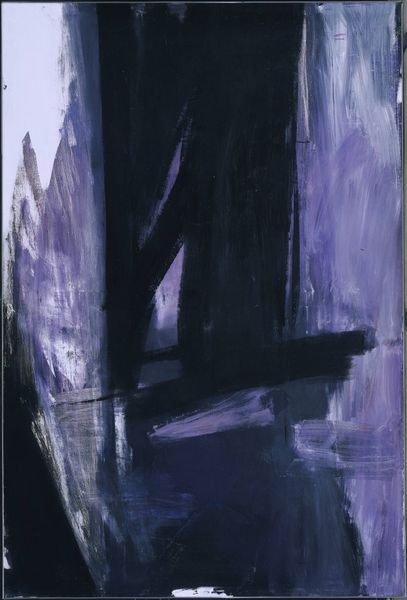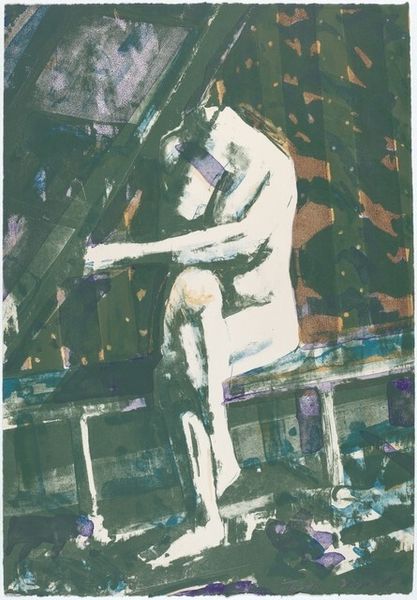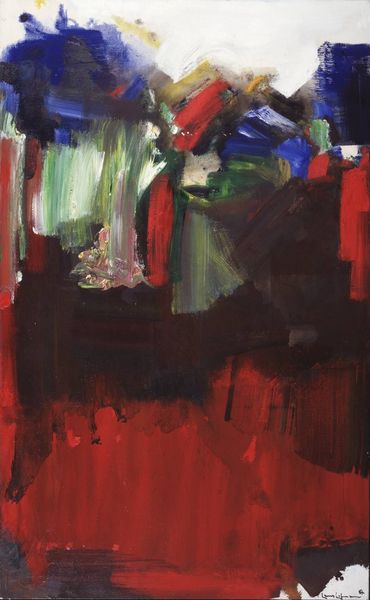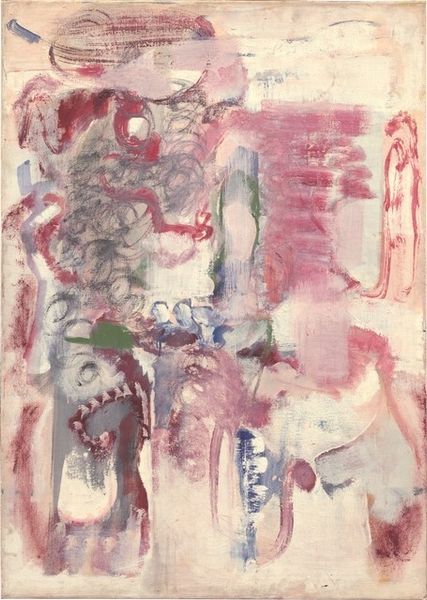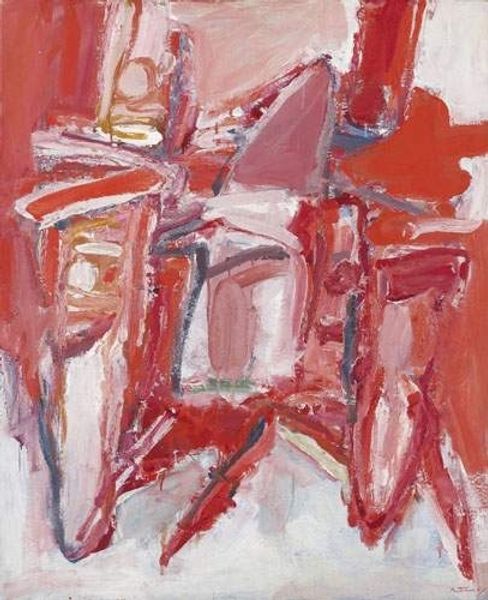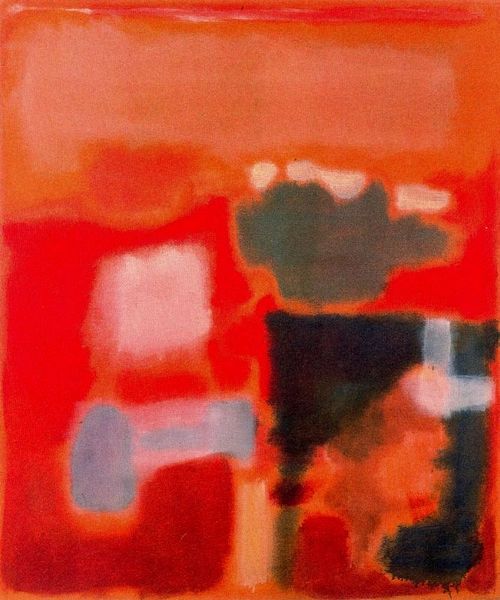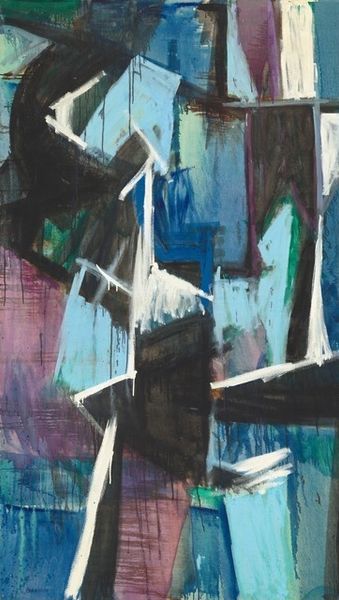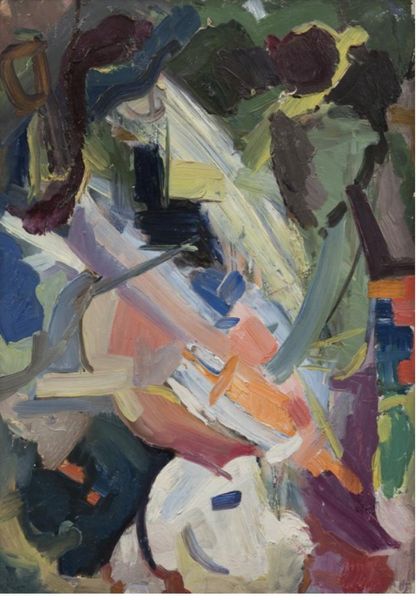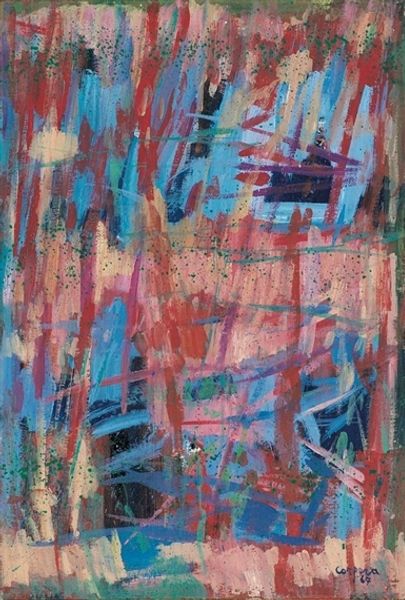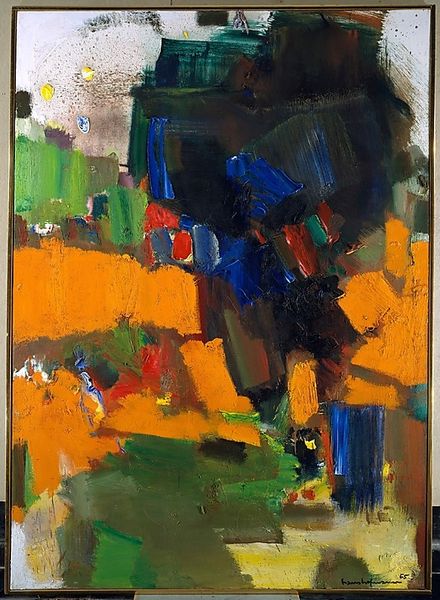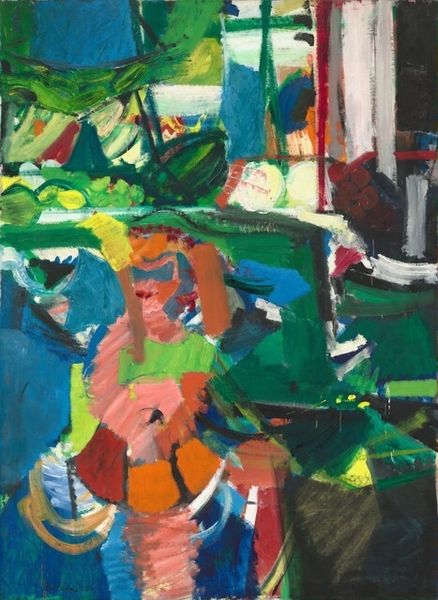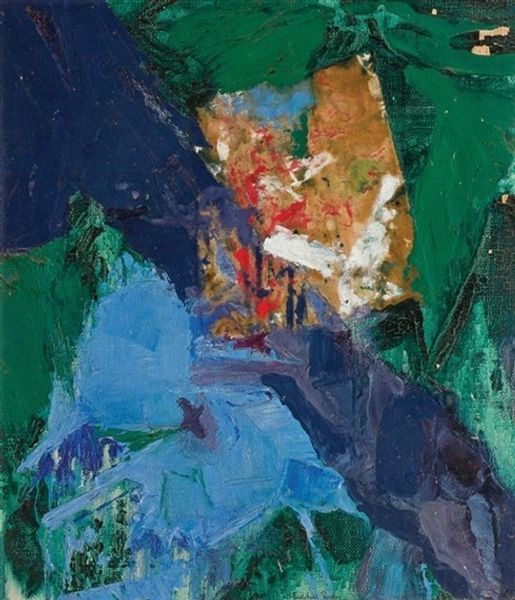
Dimensions: sheet: 27.94 x 22.23 cm (11 x 8 3/4 in.)
Copyright: National Gallery of Art: CC0 1.0
Editor: Here we have Rothko's "View of a Street in an Urban Landscape" from the mid-1930s, done in watercolor. I’m struck by the bold, almost harsh quality of the colors for a watercolor, especially that grey background. What do you see in this piece from a materialist perspective? Curator: I notice first how Rothko deploys a seemingly fragile medium like watercolor to depict the rigid structures of urban life. The blurred lines and bleeding colors work to subtly undermine the supposed stability of the cityscape, don't they? Consider the social context: this was created during the Depression. Editor: So, are you suggesting the medium reflects some anxiety regarding labor and industrial production? Curator: Precisely! The application of the watercolor becomes a gesture – a deconstruction, almost – of the very urban landscape it represents. Where does value lie within these blurred edges? Editor: It's interesting how the watercolor resists clean representation. I guess Rothko isn’t offering us a sales brochure view of the city. The raw, almost hurried application mirrors the anxiety of the time. Curator: Yes, this rapid style seems more interested in conveying the lived experience of the period than any straightforward depiction. What would a shift from this method towards something new tell us? Editor: A shift to abstraction could show the move away from a production model and embrace individualism during post-war America, then. It’s less about a 'view' and more about a feeling now. Curator: Exactly! We learn not just about what he depicts, but about his process and context through his manipulation of materials. That, to me, is quite interesting.
Comments
No comments
Be the first to comment and join the conversation on the ultimate creative platform.
